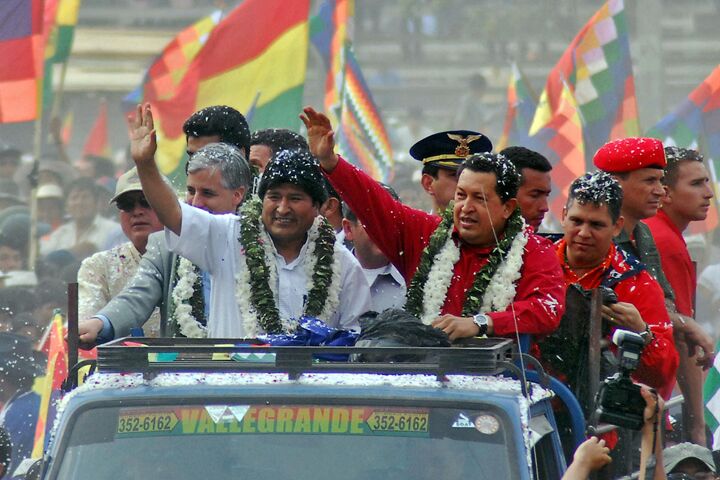
Chavez Challenging U.S. as Benefactor of Latin America
Hugo Chavez’s Venezuelan government supplies more direct state funding to Latin America and Caribbean countries than the United States does, according to a recent Associated Press report. Although total American investment in the region far outstrips Caracas’s financial aid, Chavez appears to be using the statistics to advance his socialist, anti-U.S. agenda.
Caracas has pledged more than $8.8 billion to its Latin American and Caribbean neighbors in aid, financing and energy funding. The U.S. granted or loaned $3 billion to the region in 2005, according to Washington’s most current records.
The AP pointed out that Chavez’s $8.8 billion figure reflects what he has offered, and that because the Venezuelan government does not provide transparent, verifiable accounting records, his actual expenditures may vary. Some of the pledges will likely be fulfilled over multiple years. However, the total does not include other undisclosed sums paid by Caracas.
Although Washington’s direct aid figures lag behind those promised by Chavez, the United States’s total aid to the region is still voluminous. Private investment and trade relations with U.S. companies account for far more than Chavez’s actual or declared aid. Washington also channels much of its aid through third-party institutions, the report said, obscuring the money’s original source. The U.S. was also behind World Bank and Inter-American Development Bank relief deals for $7.5 billion over the past three years.
Still, Venezuela’s financial aid promises are the largest by far of any Latin American country, and Chavez is using these commitments to bolster his agenda of helping left-leaning nations lean further away from Washington.
“We don’t want to compete with anyone,” Chavez said in a recent AP interview. “I wish the United States were 100 times above us. But no, the U.S. government views the region in a marginal way. What they offer is a pittance sometimes, and with unacceptable pressures that at times countries can’t accept.”
Despite the U.S. far outweighing Caracas as Latin America’s largest financial partner, trading a record $555.1 billion with the region in 2006 in addition to sending direct aid, Chavez is generating “more good will dollar for dollar” according to the AP.
“I know there are people out there criticizing Chavez for helping us,” one employee at a Sao Paulo factory Chavez saved from closing said. “They say he is interfering with the internal affairs of Brazil. But all he’s doing is helping to guarantee our livelihood, something the government should be doing but isn’t.”
In response to floods in Bolivia earlier this year, Washington sent $1.5 million in supplies and cash. Undermining his claim of disinterest in competing with the U.S., Chavez promised to provide 10 times more aid. He also sent in teams to help victims, which stayed for weeks. Venezuela has also paved streets in the capital of Bolivia, while a sign sticks up from a Caracas pothole, asking, “Why for Bolivia yes and for me no?”
Chavez has reduced the influence of the World Bank and the Inter-American Development Bank by helping his regional neighbors pay off their debts, which dropped from $49 billion in 2003 to $694 million this year. Bandes, Venezuela’s state development bank, is offering loans in Bolivia, Uruguay, Honduras, Guatemala and Haiti, and is offering Nicaraguan borrowers 5 percent-interest loans. Some private banks there charge 35 percent.
Critics say Chavez’s foreign aid is wild spending that Venezuela cannot afford. But even though over one quarter of Venezuelans live on less than $3 a day, Chavez says the promised foreign aid is in Venezuela’s self-interest, particularly petroleum development aid, such as subsidies for refineries in Ecuador and Nicaragua. Watch for this and other trends in the region to reveal Washington’s declining influence in Latin America. For more on this subject, read “Latin America Swings Left” and “The Latin Link Revives.”
